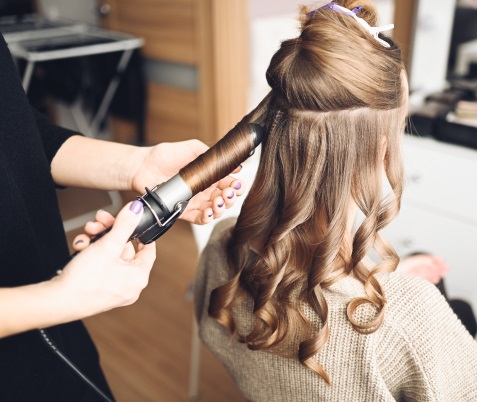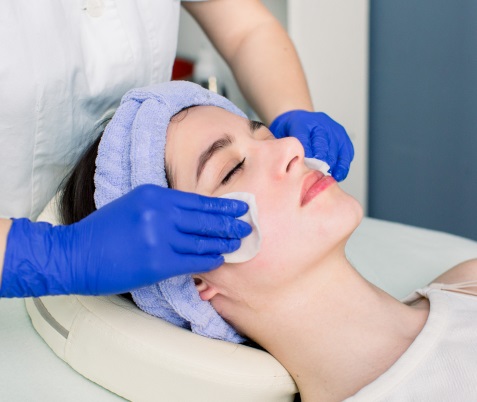How to Become a Barber - Certification and Training
Barbers interact with other people throughout their working days. This is a switch from someone who works from home or who works in a cubicle, experiencing little interaction from colleagues. The career of a professional barber fits more social people well.
As an occupation, barbers are easily and commonly found in almost every community in the country. Employment of professionals who work as barbers, hairstylists, and cosmetologists is expected to increase by 7% between 2023 and 2033 as boys and men will continue to need their hair cut, styled, and groomed regularly. Other reasons for the ongoing need for barbers include the growth of the US population; this leads to a stronger demand for basic hair care services, such as cutting and styling. Barbers are also more often asked to straighten and color hair, as well as providing other hair treatments. This trend for relatively steady employment opportunities in this field is likely to continue throughout the next decade.
What Programs are Available for Barbering?
Barbering students can attend specialized cosmetology and barbering schools, which may have multiple campuses for broader accessibility. These schools, while not always part of trade or community colleges, should be accredited. For instance, a California school offers a carefully curated curriculum, blending written, visual, hands-on, and verbal methods to teach barbering skills. Programs also include business-oriented classes that cover entrepreneurship, client-building, online marketing, and financial management, preparing students to start and manage their own barber shops or salons. After completing the program, students are ready to take the certification exam, earn state certification, and begin their careers.
Barbering programs typically require around 1,500 training hours, or just over a year, covering topics like state laws, sanitation, health and safety, anatomy, hair analysis, cutting, styling, permanent waving, chemical straightening, shaving, and hair coloring. Community colleges also offer barbering degree programs, which take about 1,250 hours to complete. Full-time students finish in around 10 months, while part-time students take about 16 months. Technical colleges teach skills like facial hair removal, scalp treatments, hair cutting, and chemical texture services.
Some community colleges offer a Barbering Associate of Applied Science (BAR.AAS) program, where students learn hair design, temporary hair piece installation, chemical treatments, salon operations, and prepare for a barber license review. After completing the required hours in the program, students are ready to take their licensure exam.
Beauty universities may offer barber programs that require around 1,500 hours of training, typically completed in 12 months for full-time students attending 37.5 hours weekly. Part-time students take longer, around 20+ months, with 21.5 to 22.5 hours per week. Some programs also provide practical experience through on-campus clinic salons. Technical schools offering barbering diplomas require about 1,200 contact hours, including over 200 lecture hours and 950 lab hours, with graduation possible in 12 months.
What Will You Learn in One of These Programs?
In a barbering program, students learn about the history of barbering, tools and their uses, hair types, infection control, and the physiology of the scalp and hair. They are trained in hair cutting, grooming facial hair, skin care, and basic business management for those considering opening their own barbershop. Students also learn how to set service fees, build a client base, and manage customer relations. The program typically includes hands-on training, often through a student-run salon where they can practice skills with real clients.
Specific skills they may practice include shampooing clients’ hair, identifying scalp conditions and offering appropriate scalp treatments, and choosing and selling treatments or products that the salon carries. Students in beauty schools may also have the option of joining an esthetician program.
Barbering students learn how to shape facial hair and teach clients to maintain it. They may also choose to master the art of shaving with a straight razor. Barbers also need to know how to bleach and dye hair, especially for men who want to cover gray. Proper sanitation, safety, and hygiene are critical in any barbershop, and students are trained to maintain cleanliness in their stations and the shop. These topics are often included in the cosmetology licensure exam.
Choosing a Barbering Program
Online vs. On-Campus
An on-campus barbering program gives students the chance to learn the theory and science of this career field. Students will learn and practice skin care, haircutting, scalp treatment, and chemical services. They also learn just what being a professional barber means. After they graduate with their certificate or degree, students will be able to fill positions as a barber, platform artist, beauty supply administrator, or as a barber shop owner.
Some barbering programs are offered online only. Students may be required to complete up to 1,000 contact hours or more in which they learn shampooing, trimming, cutting, and how to give shaves and beard trimming techniques, especially those for the most popular styles. They also learn various grooming services, such as hair styling techniques, color treatments, and hair coloring so that they can provide the service a client wants.
The thing to keep in mind is that, even with an online barbering program, you can only take the educational courses online. The hands-on training MUST be completed in person so that your educator can evaluate how you work with an actual head of hair or face. Though, of course, most of your work will be done with mannequins or faux heads of hair so that there’s no chance of you injuring someone or completely ruining their hairdo.
Find Your Online Barber Program
| Quick Facts: Barbers, Hairstylists, and Cosmetologists | |
|---|---|
| 2023 Median Pay ?The wage at which half of the workers in the occupation earned more than that amount and half earned less. Median wage data are from the BLS Occupational Employment and Wage Statistics survey. In May 2023, the median annual wage for all workers was $48,060. | $35,080 per year $16.87 per hour |
| Typical Entry-Level Education ?Typical level of education that most workers need to enter this occupation. | Postsecondary nondegree award |
| Work Experience in a Related Occupation ?Work experience that is commonly considered necessary by employers, or is a commonly accepted substitute for more formal types of training or education. | None |
| On-the-job Training ?Additional training needed (postemployment) to attain competency in the skills needed in this occupation. | None |
| Number of Jobs, 2023 ?The employment, or size, of this occupation in 2023, which is the base year of the 2023-33 employment projections. | 649,400 |
| Job Outlook, 2023-33 ?The projected percent change in employment from 2023 to 2033. The average growth rate for all occupations is 4 percent. | 7% (Faster than average) |
| Employment Change, 2023-33 ?The projected numeric change in employment from 2023 to 2033. | 45,300 |
Job Placement Assistance
Trade schools, beauty academies, and barbering schools may offer a job placement office with connections and outreach to area barbers and beauty salons. At one school, their placement office operates on a full-time basis, giving support to current students and even graduates who are still seeking work as barbers.
Good job placement offices should know whether the demand for licensed barbers is high or low. In areas all over the U.S., students graduate from their diploma or degree programs ready to start a barber career. They may contact barbershops themselves, letting them know that they are skilled barbers ready to begin employment. Some students and graduates gain access to online job search networks, where they can search for job openings and additional resources.
Financing and Scholarships
Students entering a college hoping to start a barbering career need a way to pay for their education. As long as they qualify for financial aid, they will be able to receive grants and/or scholarships, even in these types of programs. The trade school, cosmetology school, or barbering school should be accredited in some way and, therefore, participants in federal student aid; this program is the Title IV Student Aid Program. Students need to fill out the Free Application for Federal Student Aid (FAFSA) to find out if they qualify for financial aid. Speaking with a financial aid representative at the school will get them started. And here are some examples of scholarships available to students looking to complete these types of programs.
This 501(c)3 awards beauty school scholarships intended to cover the student’s tuition. These scholarships have been funded by beauty brands. In addition, Beauty Changes Lives offers scholarships (advanced) for professionals who are currently licensed.
To start a career as a professional airline pilot, you will need to become licensed by the Federal Aviation Administration. The minimum formal education for this field is a high school diploma. What’s important in this field is logging flight hours. With enough hours, the ability to land a job with an airline increases. Many airline pilots begin as military pilots, where they must first complete a bachelor’s degree and officer status.
This scholarship was established in 1991 in honor of Fred Luster, Sr., who founded Luster Products, Inc. in Chicago. As of 2011, this foundation awarded almost $670,000 in scholarships to deserving students. Students should have an 85% or higher-grade point average in school.



